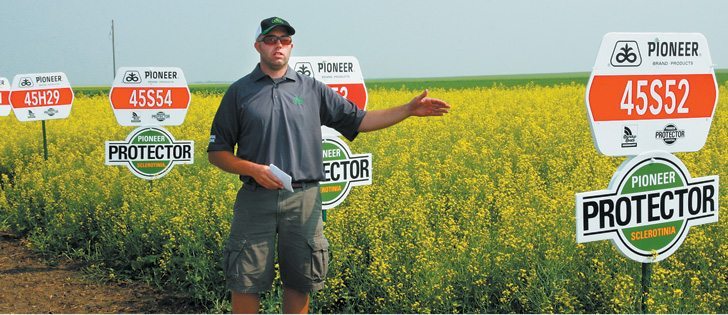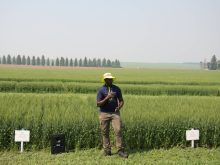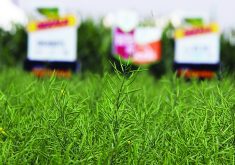Farmers have new tools to combat what is expected to be one of this year’s worst canola diseases.
DuPont Pioneer had three scler-otinia resistant lines of canola on display last week during the company’s summer agronomy tour at its research station near Saskatoon.
It is the only seed company with sclerotinia resistant canola hybrids on the market. This is the third year of commercialization for the trait.
Only a few of the farmers on the tour were growing the canola types, but DuPont Pioneer believes they will rapidly become the company’s top-sellers because of the disease’s growing prevalence.
Read Also

Taking a look inside Canada’s seed regulatory overhaul
ive years, eight task teams, 130 volunteers and 135 recommendations later, Canada’s seed industry is still waiting for meaningful regulatory change.
Sclerotinia was found in 81 percent of the fields in Saskatchewan Agriculture’s annual canola disease survey last year and in 91 percent the previous year.
Plant disease experts say conditions during the first half of this year’s growing season have been ideal for spread of the fungus.
The varieties developed by DuPont Pioneer, called Pioneer Protector, provide growers with 60 to 65 percent protection against the disease, compared to the 70 to 75 percent protection offered by fungicides if applied at the critical time.
Claude Sander, Saskatoon account manager for DuPont Pioneer, said a regular line of canola could lose 10 bushels per acre to the disease.
“With our varieties, you will only lose about four of those bushels. If you spray at the correct time, you would probably lose three of those bushels,” he said.
Competitors claim that the sclerotinia resistant types are low-yielding, but Sander said that is a fallacy. The company’s sclerotinia resistant line 45S52 outperformed its top-selling 45H29 by an average of 0.2 bushels per acre in 138 full field comparisons.
“It keeps up,” said Sander.
A farmer from the Peace River region won the company’s 2011 Alberta canola yield challenge by producing a 91 bu. per acre crop growing 45S52.
The sclerotinia resistant seed costs growers an extra $5 to $7 per acre more than 45H29, assuming a seeding rate of five pounds per acre.
Doug Fehr, technical sales agronomist at DuPont, said the company also has a new fungicide to help keep the disease in check.
Fehr said the product outperforms Bayer’s Proline fungicide and BASF’s Lance fungicide.
“In our small plot trials we were yielding, under a high disease pressure, 12 percent higher than Proline,” said Fehr.
He said the yield advantage was two to three percent compared to Lance.
Fehr said timing is critical with any sclerotinia fungicide.
Growers should spray at the 20 to 50 percent bloom stage when most flowers are open. That occurs about four or five days after the flowers first start appearing in the field.
A good idea is to compare the flowers open on the main stems of the plant to those that have fallen. The yield benefit of the fungicide declines if more than 20 flowers have fallen.
“If you’re way past 20 flowers, you’re really wasting your money,” said Fehr.
Farmers may also be wasting money by applying fungicide on scler-otinia resistant crops. DuPont is conducting 50 to 60 field scale demonstrations with its Protector lines to verify if that’s the case.
Fehr expects the results will show there are lots of situations in Saskatchewan where the sclerotinia trait will provide enough protection that a fungicide is not warranted.
That probably will not be the case in Manitoba or the Highway 2 corridor in Alberta, where there is more disease pressure.
















